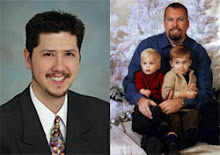Apple Tree Orphanage was not a true orphanage anymore. At least, not the kind conjured up in ancient sepia tone photographs of little doll-faced cherubs in prim nineteenth century garb and attended by stern-faced nuns. Nor was it the kind of place you'd find little Guatemalan boys playing soccer in a dirt field, naked African children with swollen bellies and flies swarming on the crust at the corners of their eyes and mouths. No, Apple Tree Orphanage did not house real orphans anymore.
Sure, perhaps a kid here or there who passed through Apple Tree's doors really didn't have parents who were still alive. But the preponderance of them did. They just happened to not live with their mommies and daddies anymore, for one tragic reason or another.
Long ago in the days of horse-drawn carriages, and perhaps as recent as the Carter Administration, Apple Tree Orphanage was as its name implies. But as the times changed, so did the orphanage. The foster care system took over the housing of orphans, and Apple Tree, out of self-preservation, became a multifaceted treatment center for troubled youth, providing case management, after-school programs, outpatient therapy, and residential treatment, among other services. The agency kept the name, however, because it elicited sympathy in the community. Most people believed it was still an orphanage; they didn't know any better. The name was good PR, good for soliciting donations.
***
I worked on one of the two residential units of the "orphanage," the Residential Treatment Unit. (The other unit was the Crisis Treatment Unit.) The RTU was a locked unit that housed up to twelve children at a time. It consisted of a main living area, a staff office, a girls bathroom, a boys bathroom, a calming room, a seclusion room, a recreation room, a nurses' office, a storage room, and twelve bedrooms. It was pasted together in furnishings and decor of neutral, institutional tones -- mostly grays and off-whites. It was on the third and top floor of a large building complex, providing a stark view of wooded communities stretching to a large river in the distance.
The clients ranged in age from as young as five years old to about sixteen years old, all mashed together in a one-size-fits-all treatment milieu. They came to the orphanage from foster homes, group homes, other institutional facilities, and their own biological families' homes. Some were removed from their prior placements due to being the victim of some alleged or confirmed incident (e.g., physical or sexual abuse). Most, however, were removed due to their inability to play nicely with others; in other words, they assaulted their biological or foster parents or siblings, started fires, repeatedly broke curfew, ran away from home, vandalized property, inappropriately touched other children and adults, and so on. So they were sent to us to see if we could control them for the time being, and maybe even fix them a little bit.
They were broken children, shattered originally by the neglect or abuse their own flesh and blood inflicted upon them, then ground further into irreparable detritus by the system -- a system composed of well-meaning judges, guardians, case workers, therapists, direct care workers, foster parents (some of whom too often are not so well meaning), and others. And here they were in Apple Tree Orphanage, trying to put the pieces back together, trying to rebuild a city of hope from Lego pieces smashed by a sledgehammer into scattered flecks of splintered plastic. Good luck.
********
© 2007 David Lee Cummings
Thursday, February 22, 2007
Subscribe to:
Post Comments (Atom)

No comments:
Post a Comment